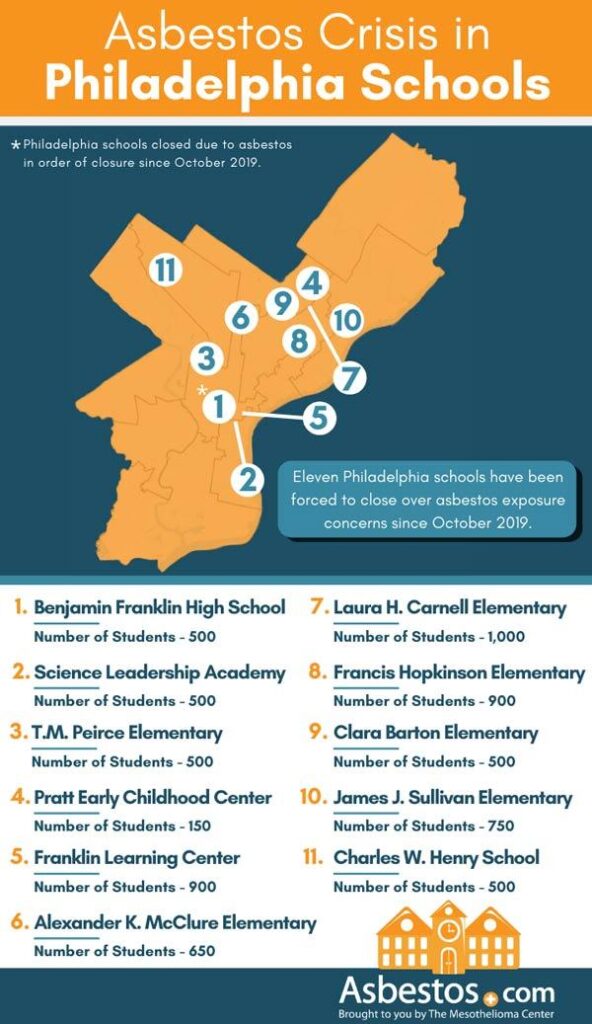Philadelphia School DistrictŌĆÖs Asbestos Oversight Failures Revealed by DOJ Investigation
Systemic Failures in Asbestos Management Uncovered in Philadelphia Schools
A recent investigation by the U.S. Department of Justice has brought to light critical deficiencies in how the School District of Philadelphia has managed asbestos hazards across its facilities. Despite clear federal regulations and repeated warnings, the district neglected to conduct timely inspections, maintain accurate records, and properly train staff on asbestos safety. This widespread oversight failure has placed both students and employees at risk, raising urgent questions about the districtŌĆÖs commitment to environmental health and safety.
The DOJŌĆÖs findings emphasize several key issues:
- Prolonged gaps in asbestos inspections: Many schools went years without the federally mandated safety evaluations, violating EPA and state guidelines.
- Incomplete or missing maintenance documentation: The lack of thorough records hindered effective tracking and management of asbestos-containing materials.
- Insufficient training for custodial and maintenance teams: Personnel were not adequately prepared to safely handle asbestos, increasing the risk of exposure.
| Issue | Consequences | Recommended Remedy |
|---|---|---|
| Missed Inspections | Extended exposure to hazardous asbestos fibers | Implement routine EPA-compliant inspections |
| Documentation Deficiencies | Unmonitored asbestos risks | Maintain comprehensive, accessible records |
| Training Shortfalls | Unsafe asbestos handling practices | Mandatory, ongoing staff education programs |
Health Implications for Students and Staff Highlighted in Federal Report
The federal report underscores the serious health dangers posed by asbestos exposure within PhiladelphiaŌĆÖs schools. Prolonged contact with asbestos fibers can lead to respiratory issues, including chronic irritation, as well as severe diseases such as asbestosis, lung cancer, and mesothelioma. The districtŌĆÖs failure to promptly address asbestos hazards and communicate risks has heightened the vulnerability of the school community to these long-term health effects.
Specific concerns detailed in the report include:
- Inadequate air quality monitoring: Several school buildings lacked sufficient testing to detect airborne asbestos fibers.
- Delayed notification to families and staff: Communication about asbestos presence and remediation plans was often untimely or incomplete.
- Unsafe renovation and maintenance procedures: Work involving asbestos-containing materials was conducted without proper safety protocols.
The table below summarizes reported asbestos exposure incidents by school type, reflecting the scope of the problem:
| School Type | Exposure Incidents | Staff Affected | Students Affected |
|---|---|---|---|
| Elementary Schools | 18 | 45 | 120 |
| Middle Schools | 12 | 33 | 87 |
| High Schools | 20 | 52 | 145 |
Essential Reforms to Strengthen Asbestos Safety in Philadelphia Schools
In light of the DOJŌĆÖs findings, there is an urgent call for comprehensive reforms to overhaul asbestos safety protocols within the School District of Philadelphia. The district must address critical gaps in inspection frequency, hazard communication, and abatement procedures to safeguard the health of its community. Key priorities for reform include:
- Regular, thorough asbestos assessments conducted by accredited environmental specialists at scheduled intervals.
- Transparent communication channels that keep parents, educators, and local officials informed about asbestos risks and mitigation efforts.
- Prompt containment and removal of identified asbestos hazards, with clear deadlines and accountability measures.
- Continuous training initiatives for maintenance and custodial staff focused on safe asbestos handling and emergency response.
Successful implementation will require collaboration among district leaders, public health experts, and community stakeholders. The following framework outlines a practical timeline and responsible parties for these reforms:
| Action Item | Deadline | Responsible Party |
|---|---|---|
| Complete baseline asbestos audits in all schools | Within 3 months | Independent Environmental Consultants |
| Launch a public-facing asbestos status dashboard | Within 6 months | District Communications Office |
| Remove all high-risk asbestos materials | Within 12 months | Certified Abatement Contractors |
| Initiate ongoing annual asbestos safety training | Immediate and continuous | School District HR & Facilities Departments |
Demand for Greater Transparency and Accountability from District Leadership
The DOJŌĆÖs report has intensified public demands for the School District of Philadelphia to adopt more transparent and accountable practices regarding asbestos management. Parents, community advocates, and staff members have criticized the districtŌĆÖs previous lack of clear communication and timely updates, which undermined trust and compromised safety. Stakeholders are now urging the district to establish formal policies that guarantee openness and responsiveness.
Proposed measures to enhance accountability include:
- Regular public disclosures detailing environmental inspections and remediation progress.
- Independent oversight committees tasked with monitoring compliance and safety standards.
- Comprehensive documentation of all asbestos-related incidents and response actions.
- Accessible channels for complaints and whistleblower reports to ensure community concerns are addressed promptly.
| Accountability Initiative | Current Status | Anticipated Outcome |
|---|---|---|
| Quarterly Transparency Reports | Proposed | Increased stakeholder confidence |
| External Safety Audits | Under Review | Improved hazard identification |
| Community Advisory Board Formation | Pending | Inclusive and informed decision-making |
Summary and Outlook
The Department of JusticeŌĆÖs investigation has exposed deep-rooted asbestos management failures within the School District of Philadelphia, highlighting significant risks to the health and safety of students and staff. As federal oversight intensifies, the district faces mounting pressure to implement transparent, accountable, and effective remediation strategies. This case serves as a critical reminder of the ongoing challenges many educational institutions encounter in maintaining safe learning environments and underscores the necessity for vigilant, sustained efforts to protect public health.








